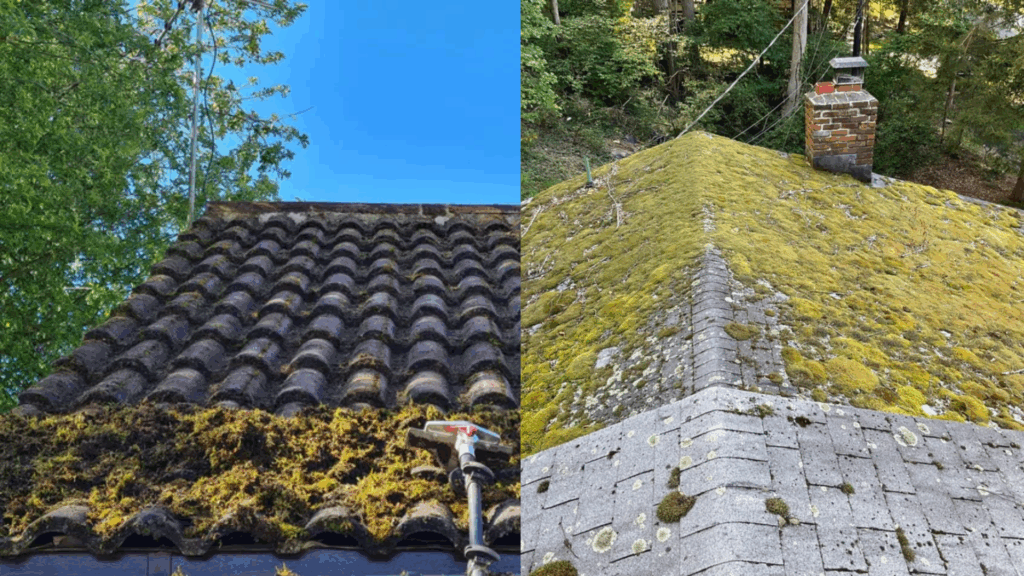Moss on your roof may look harmless at first, but I’ve seen how it can cause serious damage over time if left unaddressed.
Moss retains moisture, which can lead to wood rot, shingle damage, and even leaks.
Knowing the best time to remove moss is essential for maintaining your roof’s integrity and preventing costly repairs.
Timing your moss removal ensures that it is done effectively, and it helps prevent future regrowth.
By understanding the optimal time and taking action, I can help ensure my roof remains protected, functional, and long-lasting.
In this guide, I’ll tell you the best time to remove moss from your roof and provide tips on how to do it effectively to avoid future issues.
Why Timing Matters in Moss Removal?
Moss thrives in damp, shaded areas, often on the north-facing sides of roofs or under trees.
It retains moisture, which can damage roofing materials, causing wood rot, shingle degradation, and leaks.
Timing is key when removing moss. It’s most effective to remove it during dry, warmer months when it’s less likely to spread.
Addressing moss early prevents long-term damage and helps avoid moisture buildup before the winter or rainy season.
By removing moss at the right time, you can protect your roof and extend its lifespan.
Optimal Seasons for Moss Removal
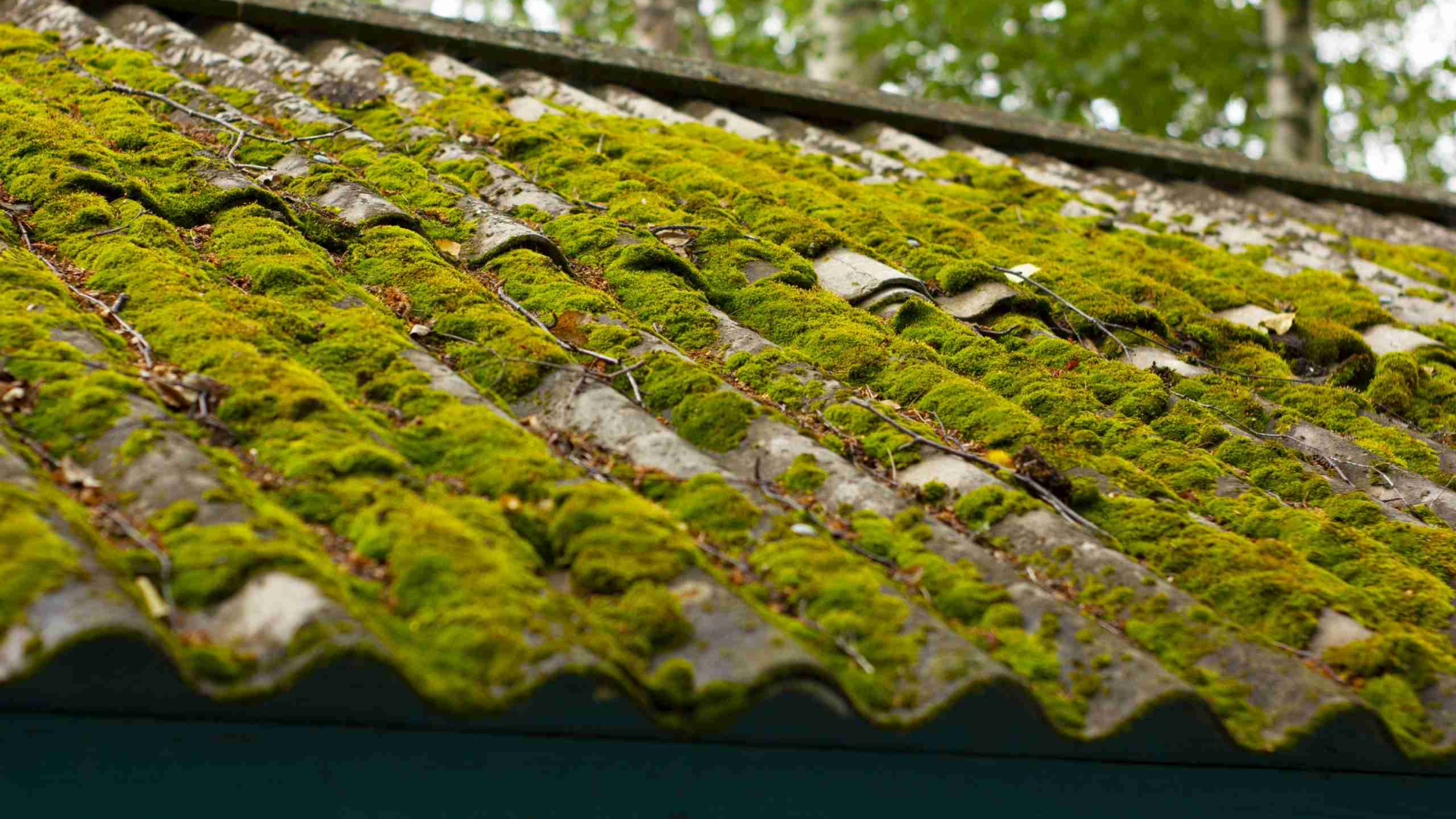
The best seasons for moss removal are late spring and summer, when dry weather conditions make the process more effective and safer for your roof.
1. Spring: Ideal for Preventive Maintenance
Spring is an excellent time to remove moss as it offers mild temperatures and increased rainfall, creating ideal conditions for moss growth.
Addressing moss during this season prevents it from spreading further and causing long-term damage.
The moisture in the air also helps treatments penetrate the roof’s surface more effectively, ensuring better results and reducing the risk of regrowth.
2. Summer: Best for Manual Removal
Summer provides dry conditions, making it the best season for manually removing moss.
During this time, moss is often dormant, which reduces the chances of immediate regrowth.
The dry weather also ensures that moss removal won’t damage the roof. However, be sure to take proper safety precautions when working on the roof to avoid accidents and ensure a thorough job.
3. Fall: Strategic Timing Before Winter
Removing moss in early fall prepares your roof for winter.
This ensures that treatments have time to be effective before temperatures drop, preventing ice dams caused by moisture trapped in moss.
Early moss removal also allows you to address potential issues before the harsher winter weather makes repairs more difficult and costly.
4. Winter: Not Recommended
Winter is not ideal for moss removal due to freezing temperatures, snow, and ice. These conditions make working on the roof dangerous and less effective.
Treatments won’t adhere well in the cold, which compromises their ability to remove moss and prevent future growth.
It’s best to wait for milder weather to ensure successful and safe moss removal.
Methods for Moss Removal
Moss removal methods include manual scraping, chemical treatments, and professional cleaning, each offering unique benefits depending on the severity of moss growth and your roof’s condition.
1. Manual Removal
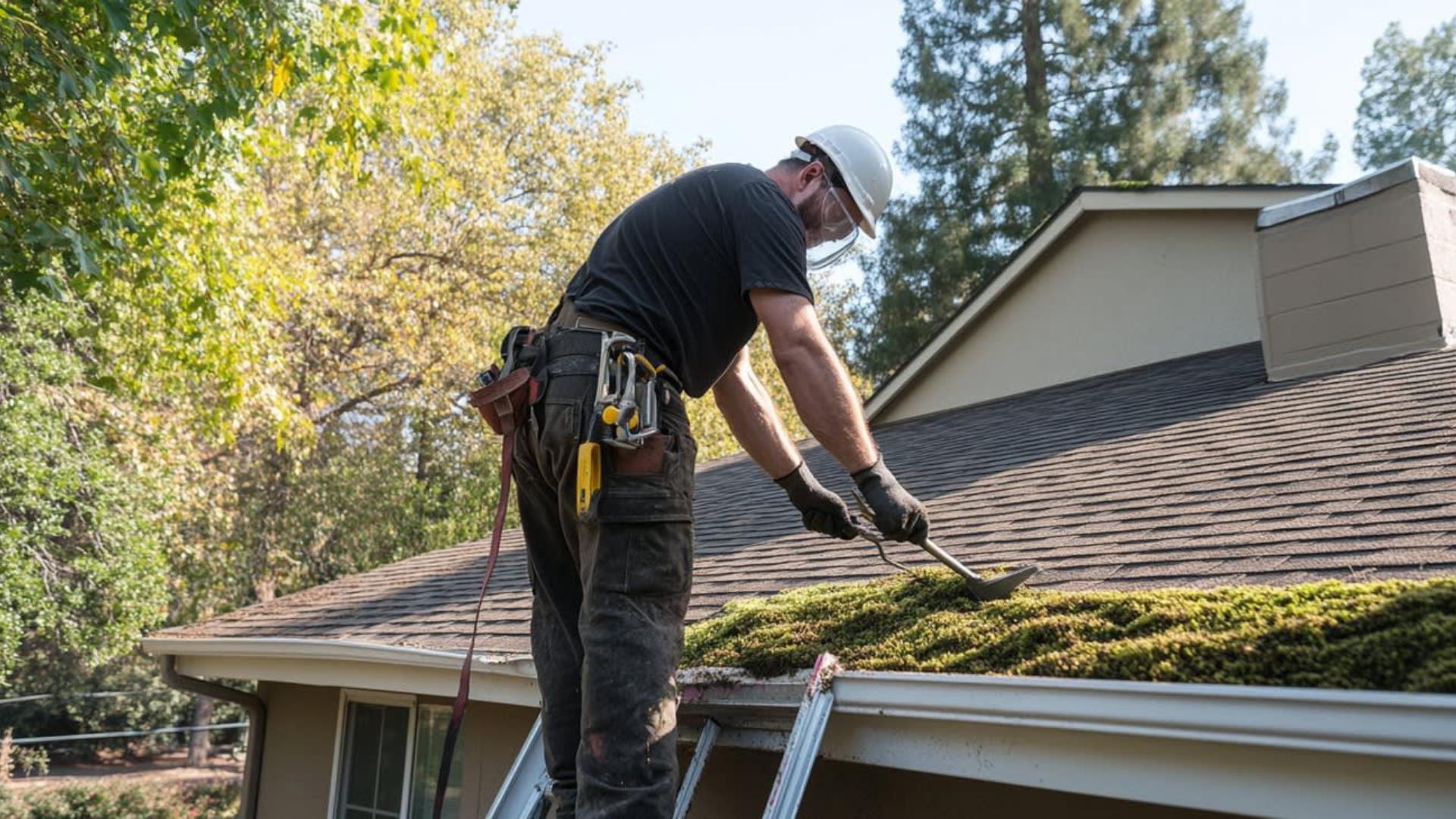
To remove moss manually, use a soft-bristle brush or specialized roof rake to gently scrape the moss off the shingles. Always work from the top down to prevent damaging or lifting shingles.
This method is most effective in dry conditions, particularly during summer when the moss is drier and easier to remove without causing damage to your roof.
2. Chemical Treatments
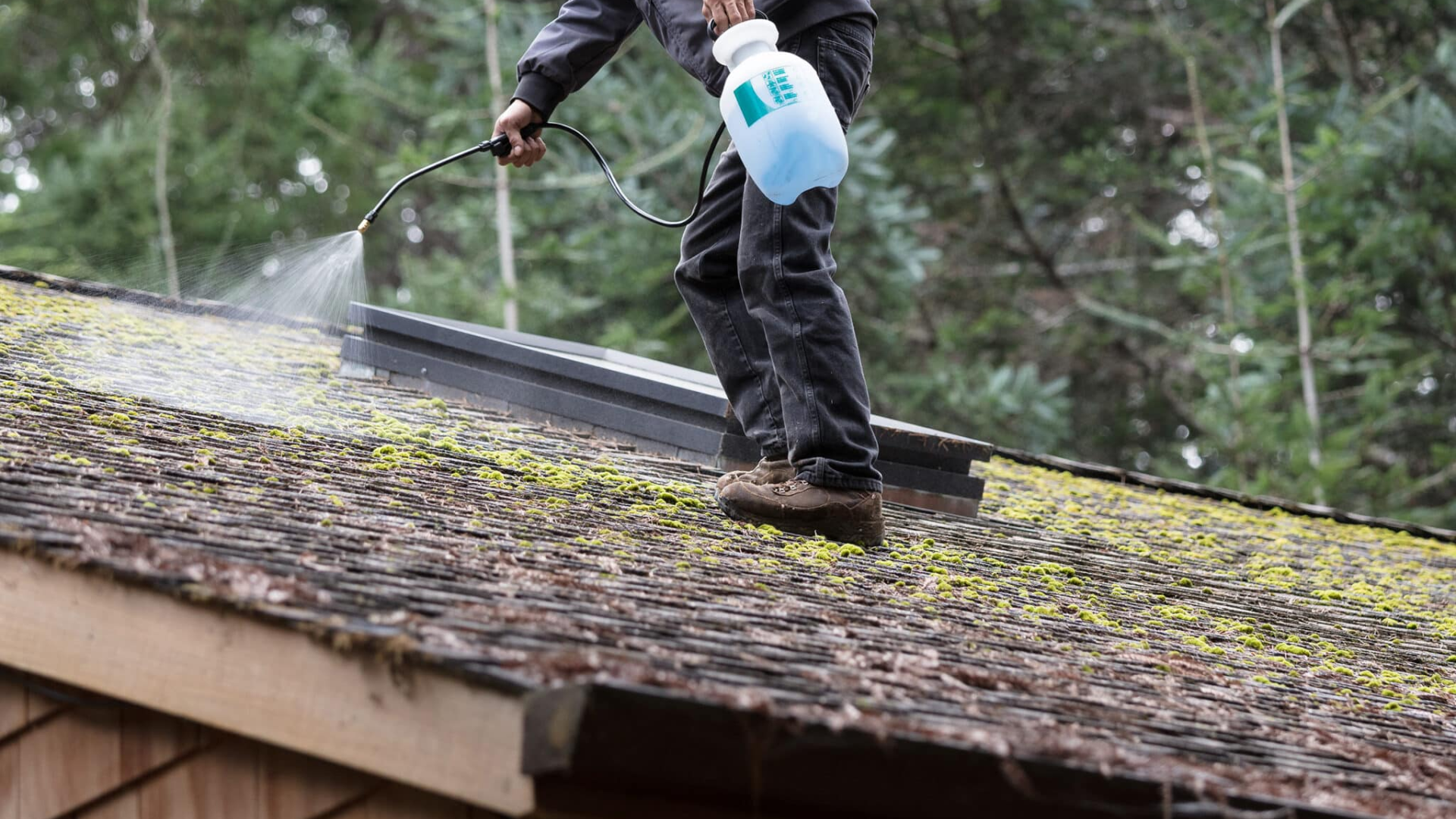
Chemical treatments for moss removal typically contain potassium salts of fatty acids or zinc sulfate. These solutions are effective when applied during dry weather, ensuring proper absorption.
Be sure to follow the manufacturer’s instructions closely and take necessary precautions to protect surrounding plants and landscaping.
This method can significantly reduce moss buildup, but it’s important to apply it safely to avoid harming your home’s environment.
3. Professional Cleaning
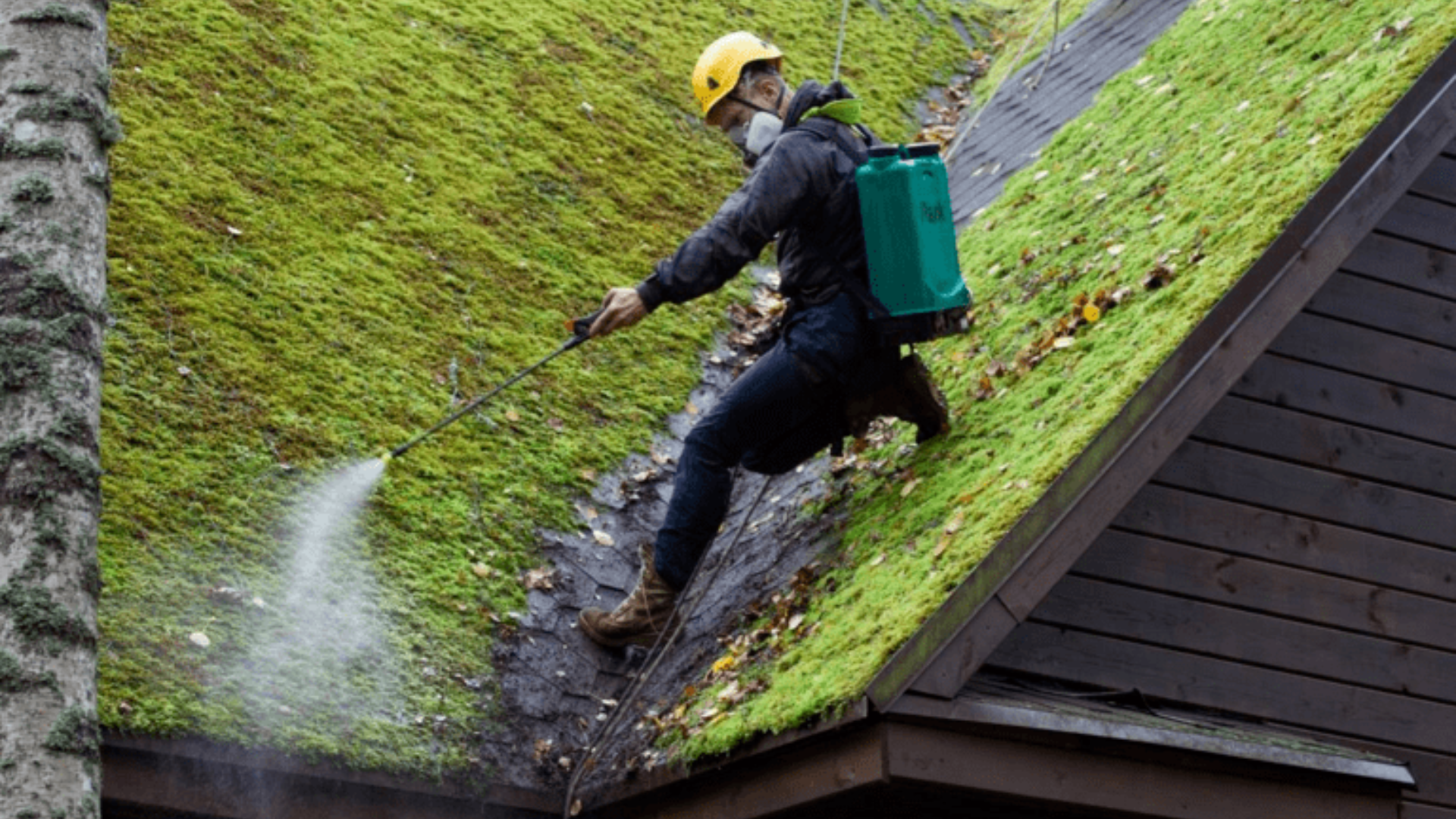
Hiring a professional roofer ensures safe and thorough moss removal. Professionals have the right tools and expertise to clean your roof without causing any damage.
They use specialized equipment to remove moss effectively and often apply treatments that prevent future growth.
If you’re not confident in your ability to remove moss yourself, or if your roof is hard to reach, a professional service is a reliable option.
Safety During Roof Moss Removal
Safety during roof moss removal is crucial to prevent accidents and damage, so always use proper equipment, check weather conditions, and consider hiring a professional if unsure.
- Use Proper Equipment: Always wear non-slip shoes and use a sturdy ladder or scaffolding to safely access your roof.
- Wear Protective Gear: Equip yourself with gloves, safety goggles, and a harness for added security while working at height.
- Check Weather Conditions: Avoid roof work during wet, windy, or icy conditions, as these can increase the risk of slips and falls.
- Work with a Partner: Have someone assist you to hold the ladder steady or provide help in case of emergencies.
- Ensure Roof Stability: Before starting, inspect your roof to ensure it can safely support your weight, especially in areas with significant moss buildup.
- Use Low Pressure: If using a pressure washer, set it to a low pressure to avoid damaging shingles or dislodging them.
- Hire a Professional: If unsure about the safety of removing moss yourself, consider hiring a professional to handle the task with proper equipment and expertise.
How Much Does It Cost to Remove Moss from a Roof?
The cost of moss removal from your roof can vary depending on several factors, including roof size, type, and the method used. On average, professional moss removal services can range from $300 to $1,000.
This price typically covers cleaning, chemical treatment, and sometimes a protective coating to prevent future growth.
If you’re opting for manual removal, you might spend between $100 to $400, depending on whether you rent equipment or hire someone. Chemical treatments alone generally cost between $200 and $500.
Keep in mind that larger or steeper roofs may incur higher costs due to the increased labor and safety measures required.
For long-term prevention, you may also need to factor in the cost of installing protective strips or treatments, which can add an additional $300 to $500 to your total expenses.
How Long Does Moss Removal Last?
The effectiveness of moss removal varies based on the method used and environmental factors. Here’s how long each approach typically lasts:
- Chemical Treatment: Lasts about 1 to 3 years, especially in areas with high moisture or heavy shade, before reapplication is needed.
- Manual Removal: Offers a longer-lasting effect, but moss can return in 2 to 5 years if preventive measures aren’t taken.
- Copper or Zinc Strips: These strips can inhibit moss growth for up to 5 years, extending the time between removal sessions.
- Regular Roof Maintenance: Cleaning gutters, improving ventilation, and trimming overhanging branches can help prevent moss from regrowing quickly.
Preventing Future Moss Growth
In addition to trimming branches and improving ventilation, there are several other ways to prevent moss from returning:
- Clean Gutters Regularly: Keep gutters free of debris to ensure proper water flow and prevent moisture buildup on the roof.
- Opt for a Sloped Roof: A steeper roof slope helps water run off more quickly, minimizing conditions that favor moss growth.
- Use a Roof Coating with Algae Resistance: Some roof coatings are specifically formulated to resist algae and moss growth, providing extra protection for your roof.
- Install Roof Ridge Vents: Roof ridge vents help to increase airflow, reducing moisture accumulation and creating an environment less conducive to moss.
Conclusion
Moss on your roof can lead to damage if left untreated, but with the right methods, you can keep your roof moss-free and in good condition for years to come.
From manual removal and chemical treatments to professional cleaning, each option offers its own benefits.
I recommend taking preventive measures, like installing copper or zinc strips, improving ventilation, and regularly inspecting your roof to reduce the chances of moss returning.
Regular maintenance can save you time and money in the long run. If you’re unsure about the best method or prefer not to tackle the job yourself, don’t hesitate to reach out to a professional roofer for assistance.
They can ensure your roof remains moss-free and in top shape. Ready to get started? Contact a roofing expert today to keep your roof looking its best.

